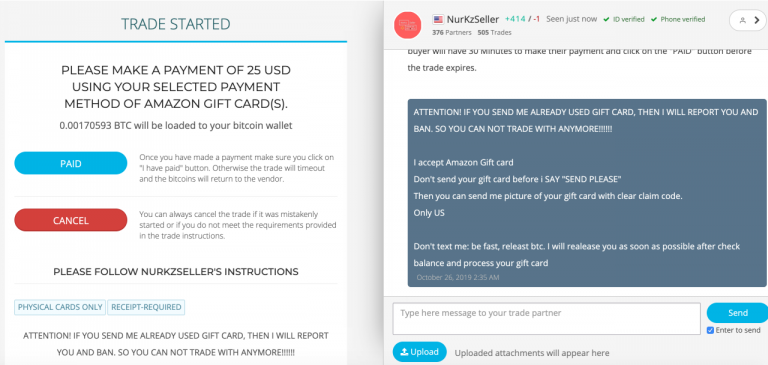The Amazon Affiliate Program in Malaysia presents a compelling opportunity for individuals and businesses to leverage the power of online marketing. This program offers a structured path to earn commissions by promoting Amazon products within the Malaysian market. Understanding the unique nuances of the Malaysian e-commerce landscape is key to maximizing your success in this affiliate venture.
This guide delves into the intricacies of the Amazon Affiliate Program in Malaysia, providing a detailed overview of its structure, strategies, and potential earnings. We’ll cover everything from the initial steps to joining the program to advanced strategies for building a successful affiliate website and maximizing your earning potential. Expect insights into the Malaysian market specifics, content creation, and website optimization tailored for local audiences.
Introduction to Amazon Affiliate Program
The Amazon Affiliate Program is a performance-based marketing program that allows individuals and businesses to earn commissions by promoting Amazon products. This program provides a platform for content creators and online businesses to monetize their websites, blogs, or social media channels by directing traffic to Amazon and earning a percentage of sales generated from referrals.Affiliate marketing, at its core, is a system where individuals or businesses promote products or services on their platforms, and receive a commission for every sale made through their unique referral links.
The program fosters a win-win scenario, as businesses benefit from increased sales and visibility, while affiliates earn income.
Joining the Amazon Affiliate Program
To join the Amazon Affiliate Program, potential participants need to fulfill certain requirements. This typically involves having a website or blog with consistent traffic, and complying with Amazon’s program guidelines. A comprehensive understanding of the program’s terms and conditions is essential for a successful partnership. Once registered, affiliates can access a unique affiliate ID and create custom links to promote Amazon products.
The process of joining involves navigating through the Amazon Associates program portal and submitting the necessary information.
Benefits of Participating
Participating in the Amazon Affiliate Program offers several advantages. Affiliates can earn substantial income streams through commission-based sales, allowing for flexible income potential. The program leverages the extensive product catalog of Amazon, providing a vast selection of products to promote. This access to a wide range of products broadens the affiliate’s promotional options and potentially increases sales conversions.
Furthermore, the program’s structure is well-established and offers valuable support tools and resources for affiliates.
Basic Principles of Affiliate Marketing
Affiliate marketing hinges on driving traffic from a platform to an online store, in this case, Amazon. The success of this approach relies on driving quality traffic that converts into sales. Promoting relevant products through compelling content, and engaging with the audience are key elements to consider. Utilizing targeted s, optimizing content for search engines, and maintaining a strong online presence are crucial components of affiliate marketing strategies.
Comparison of Amazon Affiliate Program with Other Affiliate Programs
| Feature | Amazon Affiliate Program | Other Affiliate Programs |
|---|---|---|
| Product Variety | Vast selection of products across diverse categories | May have a more limited selection or focus on specific niches |
| Commission Structure | Commission rates vary depending on the product and category | Commission rates may vary significantly depending on the program and product |
| Payment Method | Payment through a secure platform, often monthly or upon reaching a threshold | Payment methods and frequency may differ across various programs |
| Support Resources | Offers a comprehensive resource center with tutorials and tools | May or may not provide extensive support documentation |
The table illustrates a general comparison. Specific details can vary across different affiliate programs.
Specifics of the Amazon Affiliate Program in Malaysia
The Amazon Affiliate Program, while globally recognized, has nuances tailored to specific markets. Understanding these local aspects is crucial for affiliates to maximize their potential in Malaysia. This section dives into the unique characteristics of the program in Malaysia, considering the local market context, and comparing it to other regions.The Malaysian affiliate marketing landscape, while growing, presents both opportunities and challenges.
Understanding the local market dynamics is key to successful participation. Factors like consumer preferences, shopping habits, and prevalent online platforms all play a significant role in determining the success of any affiliate marketing strategy.
Local Market Context for Affiliate Marketing
The Malaysian e-commerce market is robust and displays a clear trend toward online shopping. This translates into a high potential for affiliate marketing success, as online purchasing habits are well-established. However, competition is also high, demanding a strategic approach to stand out. Factors such as cultural preferences and local payment methods must be considered when crafting an affiliate marketing campaign.
Potential Opportunities and Challenges for Affiliates
A key opportunity lies in leveraging the growing popularity of online shopping platforms and digital content creation. This allows affiliates to connect with a wider audience and potentially drive substantial sales. However, competition from established players and the need to attract a dedicated following present challenges. A well-defined niche and consistent engagement with the target audience are crucial for success.
Comparison to Other Regions
The Malaysian affiliate market, while showing promise, presents unique characteristics. Compared to other regions, the focus might differ in terms of preferred product categories. This means a thorough understanding of Malaysian consumer preferences is essential. For instance, while electronics might be a significant driver in other regions, fashion or personal care could be more prevalent in Malaysia.
Payment Structure and Commission Rates
Amazon’s affiliate program operates under a standard commission structure, which is usually based on a percentage of the sale. The specifics are Artikeld in the program’s terms and conditions. The commission rate is not explicitly region-specific, but rather depends on the product and the overall deal structure negotiated between Amazon and the affiliate. Furthermore, affiliates must meet the minimum transaction thresholds for payouts.
For example, Amazon might require a minimum payment threshold of USD 100, or the equivalent in Malaysian Ringgit, before a payout is processed. This information is available within the program’s terms and conditions. The program’s payment schedule also needs to be followed meticulously. This involves adhering to the stipulated payment schedule and maintaining accurate records of transactions and payments.
Strategies for Success with Amazon Affiliate Marketing in Malaysia
Attracting Malaysian customers and thriving in the competitive e-commerce landscape requires a tailored approach. This section details effective strategies, niche market identification, and resource utilization specific to the Malaysian market for Amazon affiliate marketers. Understanding the local preferences and cultural nuances is crucial for success.Effective affiliate marketing in Malaysia hinges on a thorough understanding of the target audience and their online behaviour.
This involves adapting strategies to resonate with Malaysian values, preferences, and purchasing habits. By focusing on local needs and tailoring content to resonate with these, affiliate marketers can achieve higher conversion rates.
Attracting Malaysian Customers
Understanding Malaysian cultural preferences is key to attracting customers. Many Malaysians value trustworthiness and authenticity in online brands. Building a strong reputation through transparent and ethical practices is paramount. Providing high-quality, informative content and testimonials from Malaysian users can further enhance credibility. Utilizing popular social media platforms frequented by Malaysians, such as Facebook and Instagram, is also crucial for effective engagement and brand building.
Content Marketing Plan for Malaysian Audiences
A successful content marketing plan caters to the specific interests of Malaysian consumers. This involves creating content relevant to local products, services, and lifestyles. Highlighting the benefits of Amazon products in a Malaysian context will resonate better. For instance, focusing on products suitable for the Malaysian climate or featuring popular local personalities in product reviews can greatly enhance engagement.
Incorporating local language elements (where appropriate) in the content can further increase its appeal.
Niche Markets in Malaysia for Affiliate Marketing
Identifying niche markets allows for a more focused and effective approach. Consider markets like beauty products, health and wellness, and personal care, which are often popular in Malaysia. Similarly, the growing interest in technology and gadgets presents a significant opportunity. Furthermore, catering to specific demographics, such as mothers, students, or professionals, with tailored product recommendations can yield high returns.
Analyzing trending products and services through market research can identify promising niches.
Tools and Resources for Malaysian Affiliates
Several tools and resources can assist Malaysian affiliates in their endeavors. Tools for analyzing website traffic, tracking conversions, and managing affiliate accounts are essential. Furthermore, staying updated on Malaysian e-commerce trends and market dynamics through reliable sources is vital. Platforms like Google Analytics, social media analytics tools, and affiliate management software are valuable assets. Local e-commerce forums and industry news sites can provide valuable insight.
Optimizing Website Performance for Malaysian Users
Optimizing websites for Malaysian users involves ensuring fast loading times and compatibility with diverse devices, including mobile phones. Malaysian users often browse on various devices. Website localization, including appropriate language options and currency settings, is crucial. Implementing responsive design is essential to ensure a seamless experience across devices.
Resources for Learning about Malaysian E-commerce Trends
Staying informed about Malaysian e-commerce trends is critical. Consult industry publications, online forums, and local market research reports to gain insights. Following key players in the Malaysian e-commerce space and participating in relevant online communities can offer valuable insights. Recognizing and adapting to evolving trends will ensure continued success.
Successful Case Studies of Malaysian Affiliate Marketers
Examining the strategies of successful Malaysian affiliate marketers provides valuable learning. Case studies can illustrate successful approaches to content creation, customer engagement, and website optimization tailored to the Malaysian market. These examples can offer practical guidance and inspire innovative strategies.
Comparison of Affiliate Marketing Methods
| Affiliate Marketing Method | Description | Strengths | Weaknesses |
|---|---|---|---|
| Product Reviews | In-depth reviews of products. | Builds trust, provides detailed information. | Time-consuming, requires product knowledge. |
| Blog Posts | Comprehensive articles on related topics. | Establishes expertise, attracts organic traffic. | Requires consistent content creation. |
| Social Media | Promoting products on platforms like Instagram and Facebook. | High visibility, engagement potential. | Requires a strong social media presence. |
Monetization and Earnings Potential
The Amazon Affiliate Program offers a lucrative opportunity for Malaysian affiliates to earn income. Understanding the potential earnings, monetization strategies, and associated risks is crucial for successful participation. This section dives into the specifics of earning potential within the Malaysian market.
Earnings Potential for Malaysian Affiliates
The earnings potential for Malaysian Amazon affiliates varies significantly depending on several factors, including niche selection, traffic generation strategies, and product knowledge. While there’s no fixed amount, successful affiliates often report substantial earnings, exceeding the average for other online ventures. This depends heavily on dedication and consistent effort in building a strong online presence. It’s essential to remember that building a successful affiliate business takes time and effort.
Methods of Monetizing Through the Amazon Affiliate Program
Several methods exist for monetizing through the Amazon Affiliate Program. A common approach involves creating engaging content that reviews and recommends Amazon products. This content could take the form of blog posts, videos, or social media posts. Other methods include promoting products through email marketing campaigns or targeted advertising. Choosing the right method depends heavily on the specific affiliate’s strengths and the niche they choose to focus on.
Revenue Streams and Commission Structures
Amazon’s affiliate program operates on a commission-based model. Affiliates earn a commission on each sale generated through their unique affiliate link. The commission rates vary based on the product category and the pricing of the product. For example, higher-value electronics often carry higher commissions, while lower-priced everyday items may have lower commission percentages. It’s crucial to understand the specific commission structure for each product category.
Amazon regularly updates its commission rates, so affiliates need to stay informed about these changes.
Commission rates are not static and can vary by product category. Keep abreast of any updates.
Comparison of Malaysian and Global Affiliate Earnings
Direct comparisons between Malaysian and global affiliate earnings are difficult to provide. Data on Malaysian affiliate earnings is less readily available. However, successful affiliates in Malaysia can achieve earnings comparable to or even exceeding the global average, especially when focused on specific high-demand product categories. A key differentiator is the ability to tap into the local Malaysian market with targeted content and promotional strategies.
Potential Risks and Limitations
Competition within the Malaysian affiliate market is high, with numerous affiliates vying for customer attention. Product selection is crucial, with a need for thorough market research to identify high-demand and profitable items. Furthermore, the affiliate’s success depends on generating sufficient traffic to their platform, requiring consistent effort in content creation and promotion. Amazon’s policies and guidelines must also be adhered to to maintain account status and avoid penalties.
Summary Table of Affiliate Products and Commissions
| Product Category | Typical Commission Range (%) | Example Products |
|---|---|---|
| Electronics | 5-15% | Smartphones, Laptops, Headphones |
| Books | 4-10% | Textbooks, Fiction Novels, Self-Help Books |
| Clothing | 2-8% | Fashion Apparel, Accessories |
| Home and Kitchen | 3-7% | Appliances, Cookware, Home Decor |
This table provides a general overview. Actual commission rates can differ based on specific product listings and promotions.
Building a Successful Affiliate Website or Blog
Creating a successful affiliate website or blog in Malaysia requires careful planning and execution. Understanding the local market and tailoring your approach to Malaysian preferences is crucial for attracting and retaining a loyal audience. This involves crafting compelling content, optimizing your website for search engines, and engaging with your audience to foster a strong relationship. A well-designed website with high-quality content is vital for converting visitors into customers.Building a successful affiliate website in Malaysia requires a deep understanding of the local market, tailoring your content to resonate with Malaysian users, and fostering a strong connection with your audience.
This involves thoughtful website design, high-quality content creation, and effective search engine optimization strategies to attract Malaysian traffic.
Website Design for Malaysian Users
A visually appealing and user-friendly website is essential for attracting and retaining Malaysian visitors. The design should be aesthetically pleasing, easy to navigate, and culturally sensitive. Malaysian internet users are increasingly comfortable with mobile browsing, so your website needs to be fully responsive. Considering factors like high-speed internet access, the prevalence of specific mobile devices, and the cultural context of Malaysia is important for a positive user experience.
The website should be easy to navigate, with clear calls to action. Visual elements, like images and videos, should be high-quality and relevant. Color schemes and imagery should be chosen carefully, considering the cultural nuances and preferences of Malaysian users.
High-Quality Content Creation
Creating high-quality content is essential for engaging your audience and establishing credibility. Your content should provide value to your readers, addressing their needs and interests. Focus on creating comprehensive, informative, and engaging content related to the products you promote. Include detailed product reviews, comparisons, and tutorials to help Malaysian consumers make informed decisions. Incorporating user testimonials and real-world examples will further enhance the credibility and value of your content.
Content should be original and well-researched, avoiding plagiarism or misinformation.
Strategies for Malaysian Traffic
Optimizing your website for search engines is vital for attracting organic traffic from Malaysian users. research should focus on Malaysian search terms and phrases relevant to the products you promote. This involves understanding the language and cultural context of Malaysian search queries. Technical elements, such as site speed and mobile-friendliness, are also important for a positive user experience and search engine rankings.
Internal linking and external linking are important for .
Examples of Successful Affiliate Websites in Malaysia
Several Malaysian affiliate websites have successfully leveraged the platform to generate revenue and build a strong online presence. Many successful affiliate sites focus on specific niches like technology, fashion, or beauty, catering to the interests of Malaysian consumers. Researching and analyzing these websites can provide valuable insights into effective strategies and content formats. Observing the design, content, and marketing strategies of established Malaysian affiliate websites can offer practical examples for building your own successful site.
Customer Engagement and Building a Loyal Audience
Building a loyal audience is crucial for long-term success. Engage with your audience through comments, social media interactions, and email newsletters. Responding to comments and questions promptly demonstrates professionalism and builds trust. Running contests, giveaways, or exclusive content for your subscribers are effective ways to build a loyal community. Providing excellent customer service and actively engaging with your audience will nurture loyalty and encourage repeat visits.
Setting Up and Managing Your Affiliate Website
Setting up your affiliate website involves choosing a domain name, selecting a hosting provider, and installing a content management system (CMS). A well-structured website architecture is critical for user experience. Using a reliable affiliate management platform to track your earnings and manage your links is essential. Regularly monitoring your website’s performance is key, paying attention to analytics, and adjusting your strategies accordingly.
Maintaining a consistent schedule for publishing high-quality content and engaging with your audience is also important.
Related Information about Amazon Affiliate
The Amazon Affiliate Program, a global phenomenon, offers a powerful platform for individuals and businesses to monetize their online presence. Understanding its global reach, history, and nuances is crucial for maximizing its potential. This section delves into the broader context of the program, providing valuable insights for aspiring and current affiliates.
Global Overview of the Amazon Affiliate Program
The Amazon Affiliate Program transcends geographical boundaries, connecting content creators with a massive online marketplace. It’s a robust system that enables participation across various countries, each with its own unique policies and opportunities. This global reach allows affiliates to tap into diverse audiences and potentially expand their income streams.
History and Evolution of the Amazon Affiliate Program
The Amazon Affiliate Program’s journey reflects the evolution of online commerce. Initially, it was a simple way for website owners to earn commissions by promoting Amazon products. Over time, the program has adapted to changing market dynamics, incorporating new features and tools to enhance affiliate performance. This evolution has made the program more user-friendly and rewarding for both affiliates and Amazon.
Comparison of Amazon Affiliate Program Policies Across Regions
Amazon’s affiliate program policies are not uniform globally. Each region has tailored policies regarding commission rates, acceptable content, and payment methods. Understanding these variations is essential for affiliates seeking to maximize their earnings and avoid potential violations. For example, some regions might have stricter guidelines on promotional content or require specific disclosure requirements.
Key Differences Between Amazon Affiliate and Other Affiliate Programs
Amazon’s affiliate program stands out due to its vast product selection, established brand recognition, and robust infrastructure. Other affiliate programs may focus on specific niches or have different commission structures. The sheer volume of products and the established trust of the Amazon brand are key differentiators.
Successful Case Studies of Amazon Affiliates Worldwide
Numerous individuals and businesses have leveraged the Amazon Affiliate Program to achieve remarkable success. Case studies often highlight the importance of high-quality content, targeted marketing, and consistent effort in driving affiliate sales. For example, a successful travel blogger might use the program to promote travel gear, while a tech reviewer might recommend specific gadgets.
How the Amazon Affiliate Program Functions Globally
The Amazon Affiliate Program operates on a global scale through a network of affiliate managers. This intricate system facilitates the tracking of sales, commission payouts, and adherence to program guidelines across different countries. The core functionality remains the same: promoting Amazon products and earning commissions on qualifying sales.
Summary of Amazon Affiliate Program Information
- Global Reach: The program is accessible in numerous countries, offering diverse market opportunities.
- Evolutionary Path: The program has adapted to changing market conditions, improving its functionality and user experience.
- Regional Variations: Policies and guidelines vary by region, demanding regional awareness from affiliates.
- Distinctive Features: Amazon’s vast product selection and brand recognition are significant differentiators.
- Successful Examples: Numerous affiliates have successfully used the program to generate substantial income.
- Global Infrastructure: The program utilizes a global network to facilitate sales tracking and commission payments.
Ultimate Conclusion
In conclusion, the Amazon Affiliate Program in Malaysia offers a rewarding avenue for online entrepreneurs to capitalize on the growing e-commerce sector. By understanding the local market, implementing effective strategies, and building a strong online presence, affiliates can generate income and establish a successful online business. This comprehensive guide equips you with the necessary knowledge and tools to navigate the Malaysian affiliate landscape, from joining the program to optimizing your website and maximizing earnings.
FAQ Summary
What are the typical commission rates for the Amazon Affiliate Program in Malaysia?
Commission rates vary depending on the product and category. Amazon publishes a comprehensive list of commission rates, but the general rates are competitive and comparable to other affiliate programs in the region.
What are some key differences between the Malaysian and global Amazon Affiliate Programs?
The Malaysian program has specific considerations for the local market, including unique customer preferences, payment methods, and relevant products. While the core principles remain consistent, the program adapts to the Malaysian context.
What are the best ways to attract Malaysian customers to my affiliate website?
Understanding Malaysian cultural preferences, using relevant s, and creating content that resonates with local interests are essential. Also, employing strategies tailored for the Malaysian market will be important.
Are there any specific resources available for Malaysian affiliate marketers?
While not exclusively dedicated, resources focused on Malaysian e-commerce and online marketing provide insights into local trends and best practices, which can be highly beneficial for Amazon affiliates.










 (Imagine a flowchart here, starting with choosing a platform, selecting payment method, confirming the transaction, receiving Bitcoin to a wallet, backing up the wallet, and finally securing the wallet.)The flowchart demonstrates the steps involved in buying Bitcoin, emphasizing the need for careful consideration of each step to mitigate risks.
(Imagine a flowchart here, starting with choosing a platform, selecting payment method, confirming the transaction, receiving Bitcoin to a wallet, backing up the wallet, and finally securing the wallet.)The flowchart demonstrates the steps involved in buying Bitcoin, emphasizing the need for careful consideration of each step to mitigate risks.
